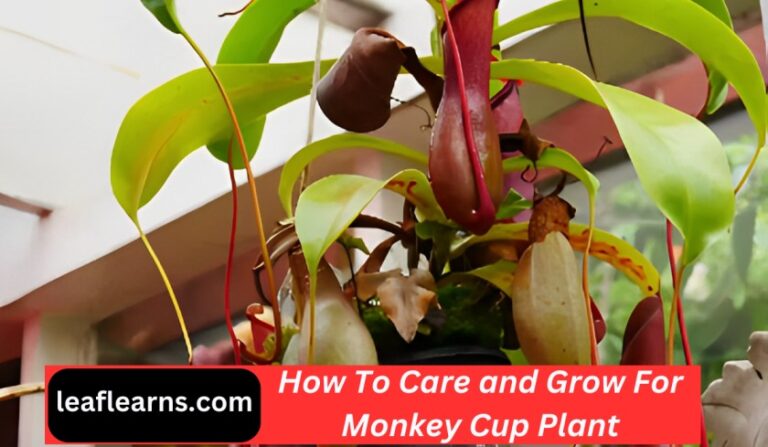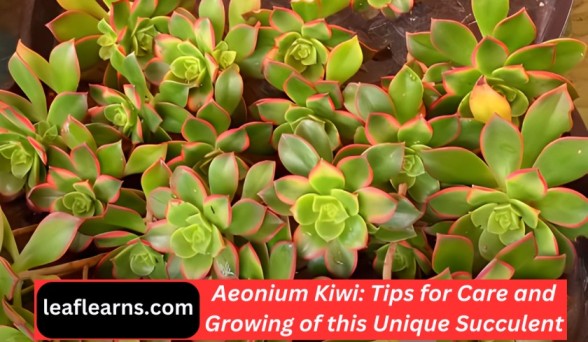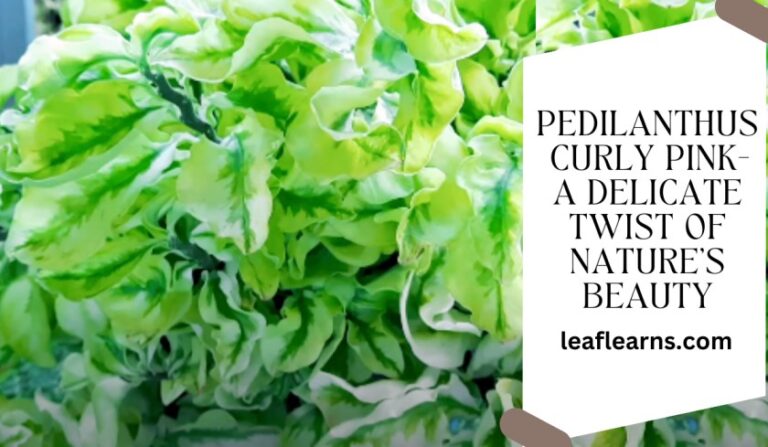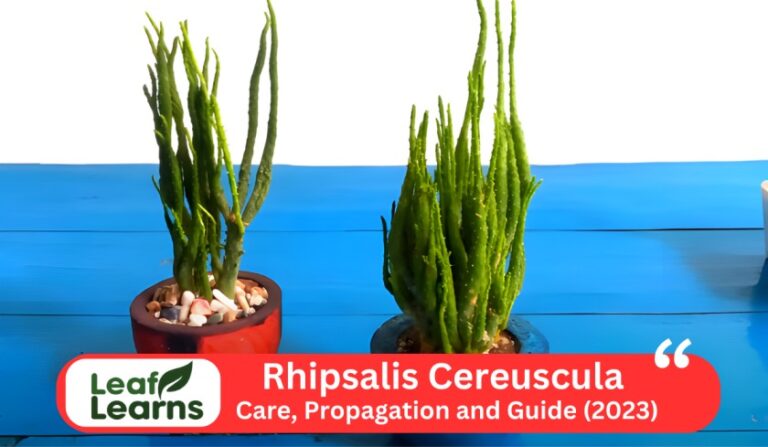How to Care and Grow for Pencil Cactus or Euphorbia tirucalli (2023)
The Pencil Cactus (Euphorbia tirucalli) is a common succulent shrub that is identified by its thin, pencil-like stems. When grown outdoors, it may reach heights of 20–30 feet and widths of 6–10 feet, while inside, it normally grows to heights of 6–8 feet and widths of 1-3 feet.

Contents
- 1 Top Care Tips
- 2 Care for Pencil Cactus
- 3 Propagating Pencil Cactus
- 4 Pruning
- 5 Growth Rate and Size
- 6 Repotting
- 7 Flowering and Foliage
- 8 Common Pests
- 9 Plant Diseases
- 10 How to Get Euphorbia tirucalli to Bloom or Euphorbia tirucalli
- 11 Problems and Solutions
- 12 Toxicity of Euphorbia tirucalli
- 13 Pets
- 14 Varieties of Euphorbia tirucalli
- 15 Suggested Uses for Euphorbia tirucalli
- 16 Euphorbia tirucalli Care: Balancing Beauty with Safety
- 17 Pruning Pencil Cacti: A Crucial Maintenance Step
- 18 Conclusion
- 19 FAQs
Characteristics
This plant, which is a member of the Euphorbiaceae family, is native to Africa, with its natural range being mostly in South Africa and Mozambique.
It needs direct sunshine, soil that drains well, and a pH range between acidic and neutral for it to grow. Because pencil cactus can withstand drought, it is best to water them seldom and let the soil dry up in between applications.
However, it’s crucial to use caution when taking care of them since they contain a very toxic white latex sap that can irritate the skin and eyes and be fatal if consumed. Pruning is necessary to keep them in form, but it should be carried out using protective clothing to prevent contact with the sap.
| Common name | Pencil-Cactus |
| Scientific Name | Euphorbia tirucalli |
| Family | Euphorbiaceae |
| Distribution | Africa, particularly in South Africa and Mozambique |
| Plant type | Shrub |
| Size | 20–30 ft. tall, 6–10 ft. wide (outdoors), up to 6 ft. tall, 1–3 ft. wide (indoors) |
| Soil pH | Acidic, neutral |
| Leaf size | Up to an inch long |
| Temperature | USDA hardiness zones 10-11; sensitive to cold and frost |
| Humidity | High humidity preferred (above 50%) |
| Pruning | Remove leggy growth; wear protective gear to avoid sap contact |
| Light requirement | Requires full sunlight to thrive |
| Soil requirement | Well-draining soil mix is essential; avoid waterlogged conditions |
| Watering Need | Drought-tolerant; water sparingly, allowing the soil to dry out between waterings |
| Propagation | Stem cuttings, allowing the cut to callus before planting |
| Flower colour | Small yellow flowers |
| Toxicity | Highly toxic – contains a white latex sap that can cause skin and eye irritation; poisonous if ingested |
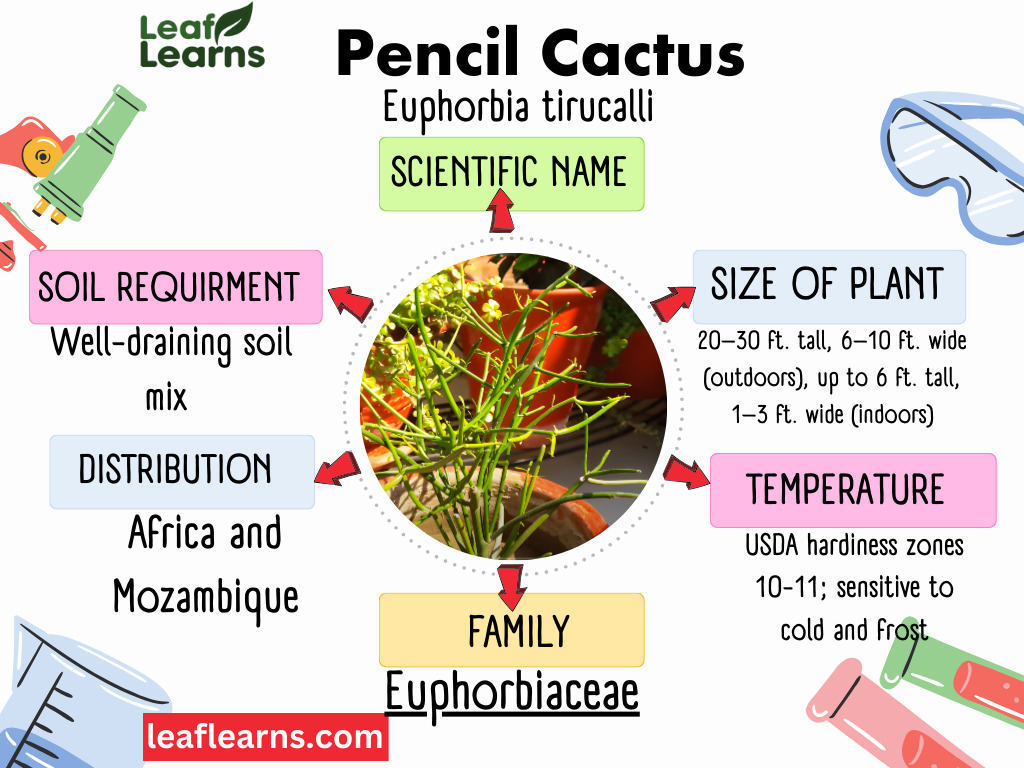
Top Care Tips
- Place your pencil-cactus in a spot with 6 to 8 hours of direct sunlight, indoors by a sunny window or outdoors.
- Use well-draining soil for planting, like cactus/succulent soil or mix regular soil with sand or perlite.
- Water sparingly and let the soil dry completely between waterings. Drain excess water from the pot.
- Trim your plant to maintain its shape and prevent it from growing too tall. Use sharp scissors and protect yourself from the toxic sap.
- Be cautious as pencil cacti contain toxic sap that can irritate the skin and eyes. Wash hands after handling, and keep away from kids and pets. Seek medical help if sap gets in the eyes or is ingested.
Care for Pencil Cactus
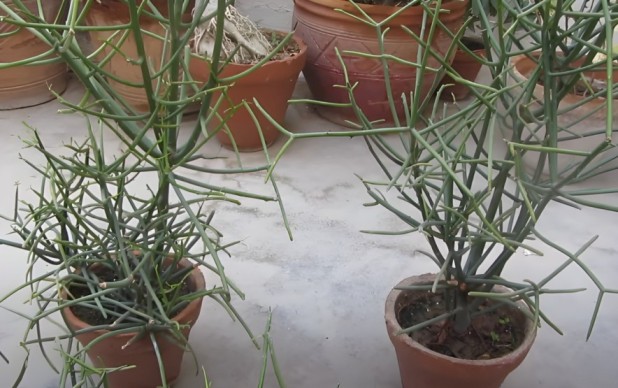
Light Requirement
Consider how much sunshine your Euphorbia tirucalli needs to survive. Put your plant where they can receive 6 to 8 hours of direct sunlight each day because they prefer a lot of sunlight.
If it’s indoors, this may be beside a sunny window, or if it’s outdoors, it could be in a sunny location.
Lack of sunshine may cause them to become tall and lean and lose their vivid colors. In order to keep them happy and healthy, don’t forget to give them lots of sunlight!
Water Requirements
It is crucial to water your Euphorbia tirucalli. Too much water is not good for these plants! Between waterings, allow the soil to dry out.
If the soil feels dry when you stick your finger about an inch into it, it’s time to water. Don’t drown it, though! Ensure that the water exits the pot and does not remain there.
Soil Requirement
The soil requirement is crucial for your Euphorbia tirucalli. Think about it like selecting the ideal house! Use well-draining soil to prevent water from being trapped.
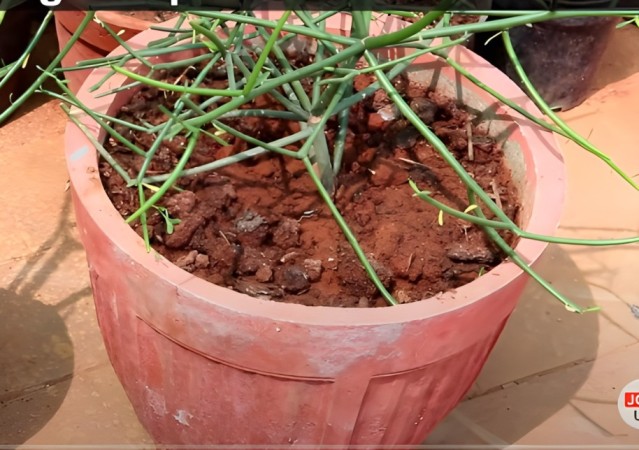
Cactus-specific soil is available, or you may combine normal soil with sand or perlite. By allowing water to flow out, this helps to avoid underlying issues.
Temperature Requirement
To properly care for your pencil-cactus or Euphorbia tirucalli, you must understand what temperature it prefers. Keep Euphorbia tirucalli in locations that are not very chilly because they like warm climates.
USDA hardiness zones 10 and 11, which are generally warm areas, are ideal for them. Avoid freezing weather and frost since they might damage the plant.
Humidity Requirement
Because Euphorbia tirucalli like greater humidity levels, which implies more moisture in the air around them, they want a little amount of moisture in the air.
You may use a humidity tray or spray some water around the plant to keep them content. Particularly if you’re raising them indoors, this helps imitate their native environment.
Just be careful not to wet the soil excessively.
Fertilizer Requirement
Euphorbia tirucalli does not require a lot of feeding. During their growing season, which is often spring and summer, you may feed them with a balanced liquid fertilizer.
Apply the fertilizer every 4-6 weeks after diluting it to half its original strength. There is no need to feed them throughout the autumn and winter since they relax.
To maintain the health of your always remember that it’s better to fertilize too little than too much.
Potting Requirement
When choosing a soil mixture for your Euphorbia tirucalli planter, look for one that drains well. A soil that allows more water to evaporate is necessary since pencil-cactus don’t appreciate having damp feet.
Use cactus or succulent-specific potting soil, or create your own by adding sand or perlite to standard potting soil.
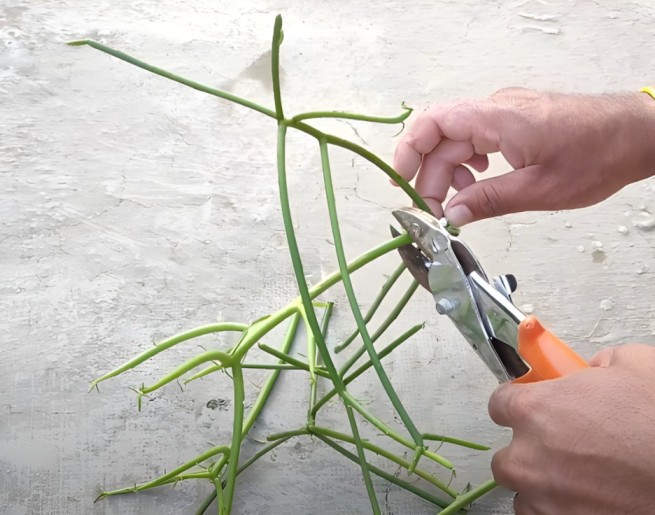
Propagating Pencil Cactus
Stem Cuttings
- Wear safety equipment to protect yourself from the poisonous sap as a precaution. Obtain a tidy pair of pruning shears or a knife.
- Choose a Healthful Stem: Pick a Euphorbia tirucalli stem that is healthy and at least 4-6 inches long, then wait a few days for the callus to form.
- Planting: Plant the callused end in a soil mixture that drains well. Create a little hole, place the stem inside, and then gently compact the earth around it.
- Use water wisely: Water sparingly, keeping the soil just barely damp but not drenched.
- Ensure Adequate Lighting Put the cutting in a spot that receives plenty of bright, indirect light.
Offsets (Pups)
Recognize Offsets: Pencil-cactus frequently develop offsets or “pups” near the base. Await these puppies’ eventual growth of a few inches.
Separation: Using a clean knife or your hands, gently separate the pup from the parent plant. Avoid damaging the roots at all costs.
The sliced area should calluse after a day or two of air drying the separated pup.
Planting: In a manner similar to stem cutting, plant the pup’s calloused end in well-draining soil.
Care: Treat it like a mature Euphorbia tirucalli by giving it a little bit of water, indirect sunshine, and other attention.
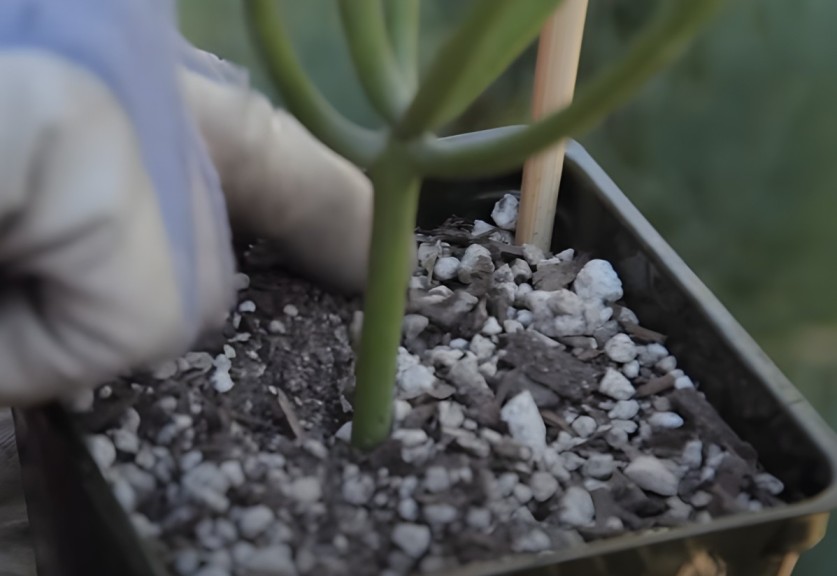
Pruning
Giving your Euphorbia tirucalli a trim is similar to pruning it. Trim the extra-long or lanky branches with a pair of sharp shears or scissors. Consider it cleaning up the plant.
But keep in mind to exercise caution as the plant’s poisonous sap might hurt your skin and eyes. So, use gloves and exercise caution.
After cutting, allow the pieces to cure for a few days before replanting or discarding them. It keeps your cactus healthy and attractive!
Growth Rate and Size
Depending on its surroundings, Euphorbia tirucalli develops at varying rates. It may grow into a large shrub outside that is between 20 and 30 feet tall and 6 to 10 feet broad.
It remains smaller indoors, typically measuring 1 to 6 feet tall and 1 to 3 feet broad.
So, depending on where you grow it, it might either be a towering outdoor plant or a smaller inside plant.

Repotting
Moving Euphorbia tirucalli to a new pot is known as repotting. When the plant outgrows its current location or the soil gets stale and less nutrient-rich, you should do this.
Choose a pot with drainage holes that is somewhat larger first. Remove the cactus from its old container gently, then set it in the new one filled with new cactus soil.
Allow it to settle in its new habitat by giving it a little water. The cactus grows better after being repotted.
Flowering and Foliage
Although Euphorbia tirucalli features tiny yellow blooms, they are not its major draw. Its distinctive stems, which resemble pencils, are what really stand out.
It is an eye-catching plant because of its green or reddish stems, which resemble thin pencils.
Therefore, despite the fact that it can bloom with tiny yellow flowers, the focus should be on its recognizable pencil-shaped leaf. All eyes are on those amazing stems!
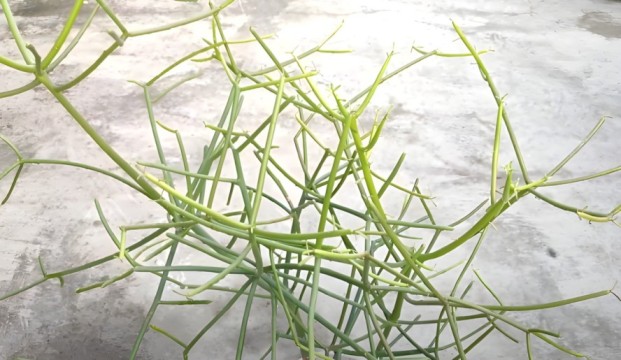
Common Pests
Your pencil-cactus or Euphorbia tirucalli may be bothered by mealybugs and scale insects, which are typical pests. These tiny creatures may drain the sap from the plant and harm it.
If you come across any, carefully remove them with a gentle brush or a cotton swab dipped in alcohol.
Plant Diseases
Euphorbia tirucalli infections are similar to ailments for plants. They can injure and afflict the cactus. Pests or excessive wetness are two common causes of these illnesses.
Make sure your pencil-cactus receives adequate light, has well-draining soil and isn’t over watered for optimum health.
Take action to address any sickness you see, such as spots or odd growths, to keep your cactus healthy.
How to Get Euphorbia tirucalli to Bloom or Euphorbia tirucalli
- It’s exciting to see your n blossom! This is how:
- sunshine: Ensure it receives at least 6 hours of direct sunshine each day.
- Water it properly by only doing so when the soil is completely dry.
- Keep it in a warm setting since pencil cactus wants to be snug.
- Blooms may take some time, so have patience and give it continuous attention.
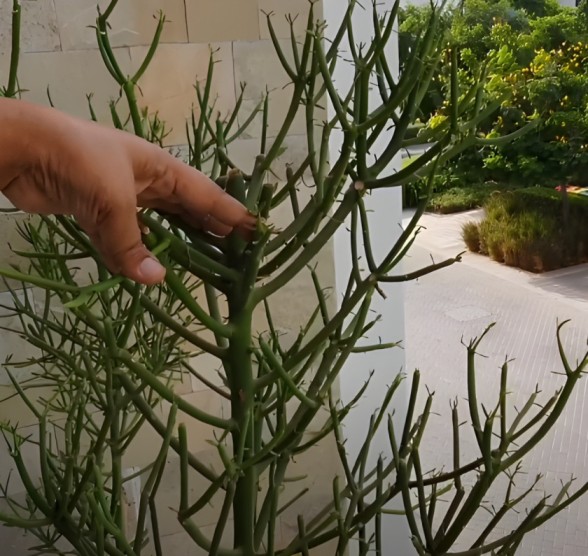
Problems and Solutions
Problem: Leggy Growth – Your pencil-cactus is growing tall and thin, looking a bit stretched.
Solution: Pruning – To promote bushier growth and a healthier form, trim the tall stems.
Problem: Yellowing or Drooping – The cactus leaves are turning yellow or drooping.
Solution: Sunlight and Proper Watering – To avoid overwatering, make sure it receives adequate sunlight and water only when the soil is dry.
Problem: Pest Infestation – You notice bugs on your plant.
Solution: Insecticidal Soap – If required, segregate the plant and use insecticidal soap to get rid of the pests.
Problem: Root Rot – The roots appear brown or mushy due to overwatering.
Solution: Repotting it in well-draining soil and using less water will help it prevent root rot.
Toxicity of Euphorbia tirucalli
The Euphorbia tirucalli produces sap that is poisonous to touch or consume. Toxins in the sap have the potential to irritate the skin and eyes.
It’s crucial to handle it with caution. Always wash your hands after handling it, and keep children and pets away from it.
Consult a doctor straight away if the sap gets in your eyes or if someone consumes it. Be careful when around this plant!
Pets
It’s crucial to use caution while using euphorbia tirucalli if you have animals like cats or dogs. If your pets opt to munch on these plants, it might be dangerous for them.
If consumed, the pencil-cactus’ poisonous sap can irritate the mouth or create much worse issues.
Put the pencil-cactus out of reach of your dogs’ reach and always wash your hands after handling it to prevent spreading any sap to them through petting or play.
Varieties of Euphorbia tirucalli
Firestick Pencil-Cactus (Euphorbia tirucalli ‘Rosea’): This type has stems that are vivid red and orange and seem like a bundle of patterned sticks. It really draws attention in gardening.
Mistletoe Cactus (Rhipsalis): It has long, slender stems and resembles a Euphorbia tirucalli, although not actually being one. Because of their drooping and cascading growth, mistletoe cactus are well-suited for hanging baskets.
Blue Pencil-Cactus (Euphorbia coerulescens): This species, as its name implies, has stems that are blue-green and offer a distinctive touch to your collection of succulents.
African Milk Tree (Euphorbia trigona): It’s a near relative of the pencil cactus but not quite. It is renowned for its vertical growth and has three-sided stems.
Monadenium Ritchiei (Pencil Tree): This variety features thick, pencil-like stems and is more compact in size compared to other pencil cacti.
Euphorbia Ammak: Also known as the “African Candelabra,” it has tall, columnar stems that resemble a cactus.
Suggested Uses for Euphorbia tirucalli
- Pencil-cactus are excellent indoor plants for home décor. They may be placed in a pretty pot and displayed in your living room, bedroom, or on a bright windowsill. They’ll give your house a dash of elegance and nature.
- Office Buddy: These low-maintenance cactus are perfect for your desk at work because they require little care. They’ll flourish with a little sunshine, bringing a calmer atmosphere to your desk.
- Garden Accent: You can grow a Euphorbia tirucalli outside if you have a garden. They may develop into a dramatic focus point in your landscape since they get rather tall.
- this plant are unusual and fashionable gifts. Give one as a present to a friend or family member. They make thoughtful gifts that stand for lifelong affection and friendship.
- Pencil cacti are ideal for desert-like or arid settings in xeriscaping. They work well in xeriscaping projects since they don’t require a lot of water, saving you time and resources.
- Having a Euphorbia tirucalli may be a pleasant method for parents or teachers to teach children about plants and how to take care of living things.
- Symbolism: Some individuals think that pencil cacti offer luck or good vibes. For its symbolic meaning, you can display one in your house or workplace.
Euphorbia tirucalli Care: Balancing Beauty with Safety
Caring for a pencil-cactus is essential, but it’s important to note that these unique plants can be both dangerous and toxic if mishandled. Pencil cacti (Euphorbia tirucalli) contain a white, latex sap that is highly toxic and can cause severe skin and eye irritation.
When working with a Euphorbia tirucalli, it’s crucial to wear protective gloves and eye protection to avoid contact with this sap. Additionally, be cautious around pets, as pencil cacti can also be harmful to cats and dogs if ingested.
To keep these beautiful succulents thriving while ensuring safety, provide them with well-draining soil, ample sunlight, and proper pruning.
Pruning Pencil Cacti: A Crucial Maintenance Step
Pruning a Euphorbia tirucalli is a crucial aspect of its care. These plants have a tendency to grow leggy and develop brown or woody stems over time. To maintain their health and aesthetic appeal, regular pruning is necessary. To prune a pencil-cactus, use clean, sharp pruning shears and cut back any overgrown or damaged stems.
Be sure to wear protective gear and take precautions to avoid contact with the toxic sap. After pruning, allow the cuts to callus over before replanting or propagating the pencil-cactus.
Remember that these plants require specific care, both indoors and outdoors, so understanding their needs and potential hazards is vital for their well-being and your safety.
Conclusion
In conclusion, feeding your Pencil-Cactus with the proper amount of sunshine, utilizing well-draining soil, and watering sparingly are all important aspects of maintaining it. To avoid the harmful sap, trim it frequently while wearing protective gear. Due to its toxicity, use caution and keep children and pets away from it.
Pencil cacti may be utilized for a variety of things, including garden accents, workplace plants, home décor, and even meaningful presents. The Euphorbia tirucalli may be an interesting addition to your environment, whether you want to increase the amount of greenery in your surroundings or investigate the symbolic meaning of this unusual plant.
FAQs
How much sunlight does a pencil cactus need?
Whether it’s indoors beside a sunny window or outdoors, a pencil-cactus needs 6 to 8 hours of direct sunshine per day. Lack of sunshine can cause lanky growth.
What type of soil is best for a pencil cactus?
The soil should be well-draining for pencil-cactus. To increase drainage, you can use special soil made for cacti or succulents or combine conventional soil with sand or perlite. By avoiding wet factors, helps prevent root rot.
How often should you water a pencil cactus?
Water pencil cacti in moderation. Between watering, let the soil totally dry out. If the soil is dry about an inch down with your finger, it’s time to water. Make sure the extra water drains to avoid over watering.
How can you propagate a pencil cactus?
A Euphorbia tirucalli may be reproduced via offsets (pups) or stem cuttings. Choose a healthy stem, let it calluse, put it in well-draining soil, water sparingly, and give it bright, indirect sunshine for stem cuttings. Offsets should be planted separately from the parent plant when they have developed a callus.
What precautions should you take when handling a pencil cactus?
A pencil-cactus produces a hazardous white latex sap that can irritate the skin and eyes, therefore handle it with caution. Wear safety gear, keep children and pets away from it, and thoroughly wash your hands after handling. If sap gets in your eyes or you swallow it, get medical help right away.
What is the temperature range preferred by pencil cacti?
Pencil-cactus do well in USDA hardiness zones 10-11. They flourish in warm climates. Avoid freezing weather and frost since they might damage the plant.
What are some suggested uses for a pencil cactus?
Euphorbia tirucalli may be used as unusual presents, garden accents, home décor, workplace desk decorations, xeriscaping projects, and educational tools, and are said to impart good energy to places where they are planted.


